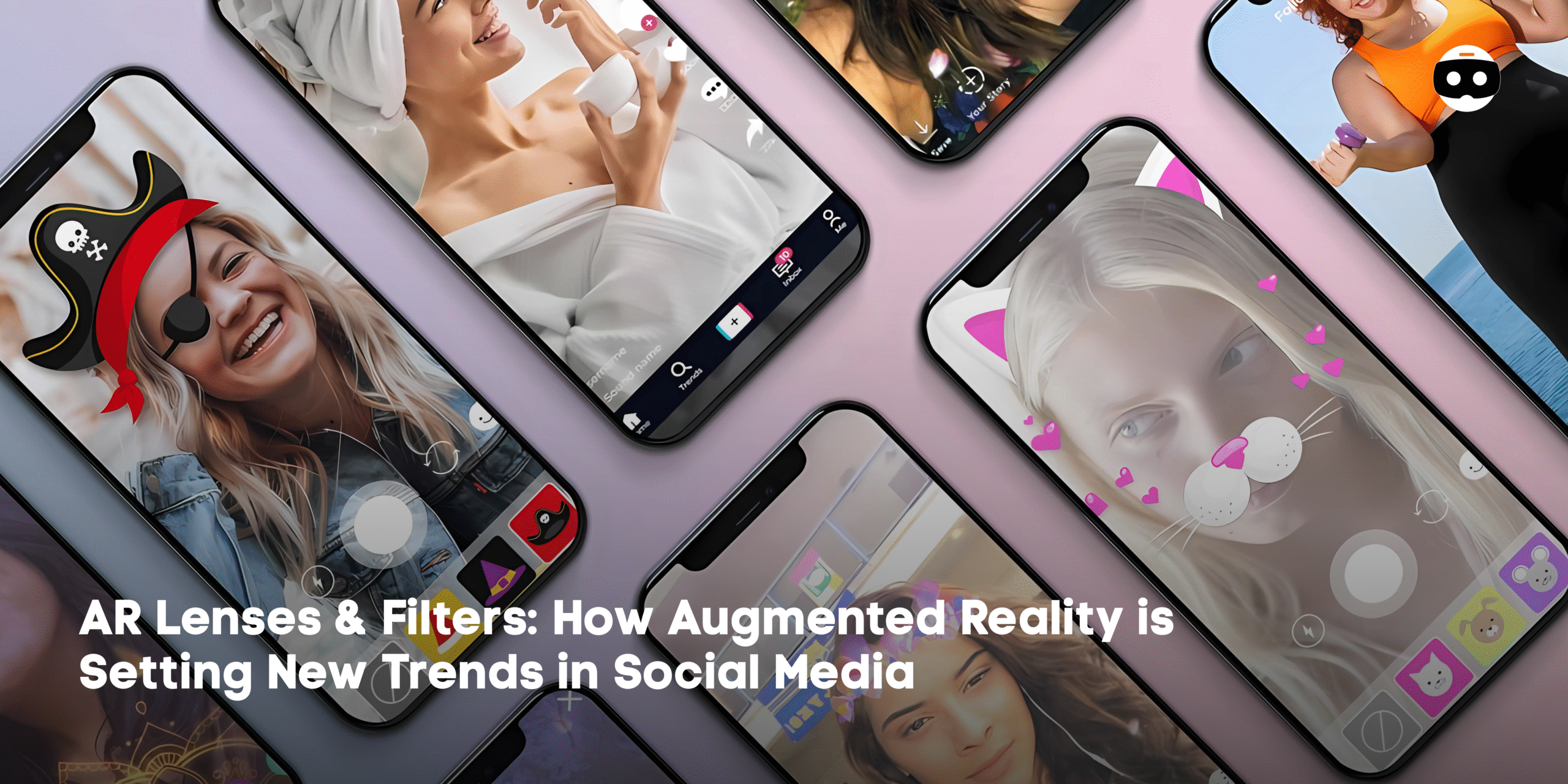Social media has always thrived on creativity, interaction, and trends. From the early days of static photo sharing to today’s short-form video explosion, platforms evolve around the ways people express themselves. In recent years, one innovation has stood out in shaping these digital behaviors: Augmented Reality (AR) lenses and filters.
What started as fun dog ears on Snapchat has turned into an entire ecosystem of interactive filters, virtual try-ons, branded experiences, and viral challenges. AR has become a natural part of how users create, share, and engage on social platforms and it’s setting the stage for what the future of social interaction looks like.
The Rise of AR in Social Media
The introduction of AR lenses on Snapchat in 2015 was more than a playful experiment it was the beginning of a cultural shift. Users suddenly had a way to merge digital creativity with their real-world environments, and it spread fast. Soon, Instagram and TikTok integrated AR effects, democratizing filter creation with tools like Spark AR and Effect House.
Today, AR filters are no longer just about funny face swaps. They’re:
- Changing how we discover and try products.
- Driving viral trends and challenges.
- Serving as powerful tools for brands to connect with younger audiences.
In 2025, AR filters are now considered essential to the social media experience, shaping content consumption and creation across demographics.
Self-Expression in the Digital Era
At the heart of AR filters is the idea of self-expression. Social media users, particularly Gen Z and Gen Alpha, value personalization. They don’t just want to post a photo; they want to post a photo that reflects their identity, mood, or creativity in the moment.
AR filters provide a canvas for this kind of expression. Whether it’s a fantasy-inspired lens, a makeup filter, or an interactive background that transports users to another world, filters let people step outside their everyday lives. They blur the line between reality and imagination, making ordinary content feel extraordinary.
This has also fueled conversations around digital identity. As people spend more time in hybrid digital spaces, filters act as both creative tools and subtle statements about how users want to be seen online.
Driving Viral Trends and Challenges
Scroll through TikTok or Instagram today, and chances are you’ll encounter at least one viral AR effect. Whether it’s a personality quiz filter, a “what character are you?” roulette, or a dance challenge with an animated overlay, AR filters fuel shareability.
The viral nature of these effects comes from two things:
- Accessibility – Anyone can participate with a single tap.
- Community – Users feel part of something bigger when millions engage with the same filter.
These moments create cultural touchpoints. AR challenges give platforms a steady stream of user-generated content while giving creators fresh ways to stand out. In many ways, AR has become the new meme format, flexible, participatory, and endlessly remixable.
AR Filters & Brand Engagement
Beyond entertainment, AR filters are transforming marketing on social media. Brands across industries have realized that interactive filters offer a unique way to capture attention in crowded feeds.
Fashion and beauty companies, for instance, use AR try-ons to let customers test lipsticks, sunglasses, or outfits before buying. Sports brands launch celebratory filters for major events. Even fast-food chains experiment with playful AR lenses to engage younger audiences.
The advantage here is two-fold:
- Engagement – AR filters often see higher interaction rates than static ads.
- Authenticity – When users share branded filters with friends, the endorsement feels organic, not forced.
In fact, studies have shown that branded AR experiences can increase customer engagement by up to 20%, proving that AR filters aren’t just gimmicks — they’re serious marketing tools.
The Role of AI and Personalization
The next big trend within AR filters is personalization powered by AI. Instead of generic overlays, users are beginning to experience effects tailored to their faces, moods, or preferences. For example, AR beauty filters can recommend shades based on skin tone, while AR fashion filters can adapt sizing suggestions in real time.
This convergence of AR and AI deepens user trust and keeps audiences coming back. It also sets the stage for hyper-personalized shopping journeys that flow directly from social feeds into e-commerce checkouts.
Challenges and Conversations Around Authenticity
Of course, the rise of AR filters hasn’t been without criticism. There are ongoing conversations around how beautifying filters affect self-esteem, body image, and the pressure to maintain a “perfect” digital identity. Platforms are responding by labeling edited content and encouraging transparency.
At the same time, creators are pushing for more diversity and inclusivity in AR filters, ensuring that tools are designed for a wider range of skin tones, features, and cultural expressions. This inclusivity is becoming a competitive advantage for platforms and brands alike.
What’s Next for AR in Social Media?
Looking ahead, AR is set to expand even further. Emerging possibilities include:
- Full-body tracking for fashion try-ons.
- Interactive AR concerts and events blending entertainment with social sharing.
- Collaborative AR spaces where multiple users can interact with the same digital objects in real time.
As 5G adoption and device capabilities improve, AR experiences will become smoother, richer, and more immersive. Social platforms will continue investing in AR creation tools, making it easier for both brands and everyday users to design their own filters.
Conclusion
AR lenses and filters have evolved from novelty features into cultural staples of social media. They empower users to express themselves, fuel viral trends, and create new opportunities for brands to connect authentically with audiences.
In many ways, AR is shaping the next phase of digital storytelling where content is no longer just consumed but lived, interacted with, and shared in deeply immersive ways. The trend is clear: the future of social media is augmented.


